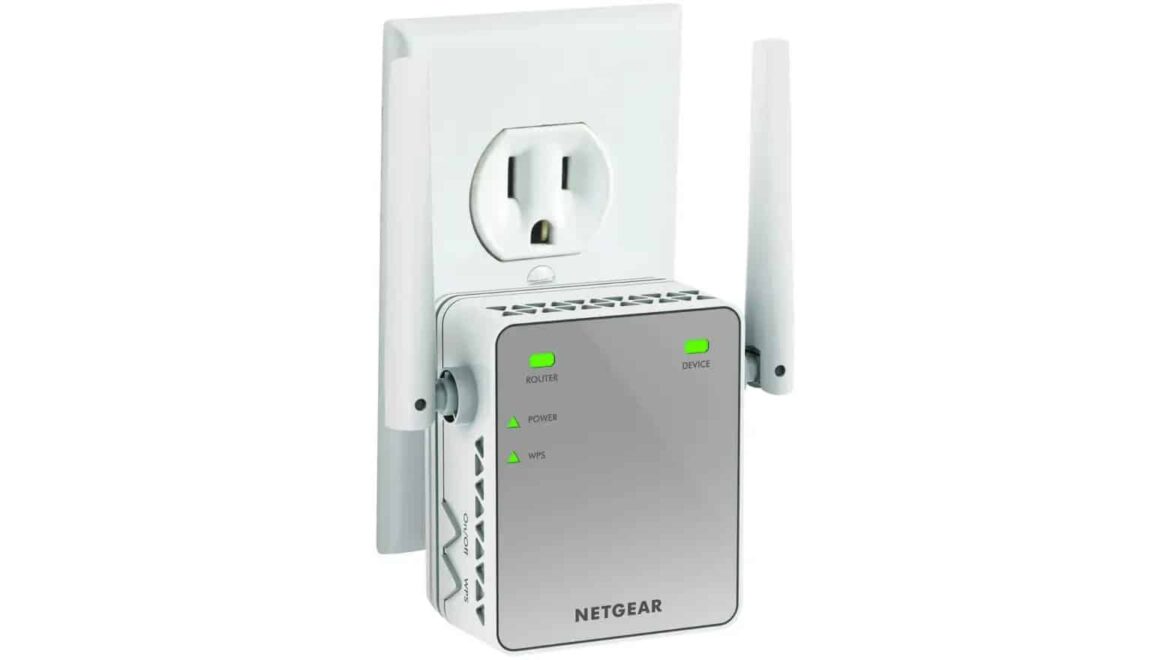378
If you want to expand your WLAN network, you can use a WLAN amplifier for power outlets. These devices effectively extend the WLAN range.
WLAN amplifiers for power outlets: how they work
WLAN amplifiers for power sockets extend wireless networks and thus act as repeaters. They receive signals from the router, process them, and transmit them without significant loss. This means that WLAN can also be received in areas where this was not previously possible.
- The repeater receives the radio signals from the router, corrects any slight distortions in the signal and then transmits them. The repeater itself is not visible to users of the WLAN network.
- It only sees the name of the actual network that is set up by the router. If it is within the radio range of the repeater, the data sent by the router is transmitted to the end device via the repeater.
- If desired, you can also give the repeater’s network a different name. This allows you to decide for yourself whether you want to be connected to your router or your repeater.
- If the router and repeater have the same name, the connected device, for example a mobile phone, automatically selects the currently stronger network. As they are compatible with numerous network standards, including Wi-Fi 5, 6, 6e, and 7, modern models offer high data transfer rates.
- Simple models are available for around $30. They usually offer dual-band Wi-Fi and 160 MHz broadband, but depending on the model, they may also have MIMO antennas. This significantly improves stability and transmission rates.
- Models with a wider range of functions can also receive radio stations or connect other devices such as Blu-ray players to the internet via a LAN connection. These cost around $50 to $75.
Instructions: How to install a Wi-Fi amplifier for your power outlet
With a repeater, you can extend the range of your WiFi network for very little money and in almost no time at all.
- It only takes a few seconds to set up the repeater. First, plug the amplifier into the desired power outlet and make sure your Wi-Fi router is turned on.
- To start setting up the repeater, press the WPS button on the router and repeater at the same time. On some devices, this button may have a different name, such as Connect or similar.
- The two devices will then find and configure themselves automatically. Alternatively, you can connect the repeater to your computer and set it up manually.
- If the connection is not established, plug the repeater back in. Then check whether the Wi-Fi connection is strong enough. You may need several repeaters, especially if your living space has a lot of nooks and crannies.
- Note: Make sure your Wi-Fi router is always up to date to fix any connection issues and close security gaps. This is also important for the WPS connection, as the feature is vulnerable to brute force attacks, especially if the software is outdated.
Advantages of a Wi-Fi extender
With a repeater, you can easily extend your Wi-Fi network without any significant loss of speed.
- This means you don’t necessarily have to place the router in the middle of your home. If you place the router on the ground floor, the repeater will amplify the radio waves on the first floor, giving you a Wi-Fi connection on the second floor as well. Repeaters can also be used with all standard Wi-Fi routers.
- You can place repeaters in specific locations to avoid obstacles and interference. This has a positive effect on the maximum speed of the Wi-Fi connection.
- Tip: As an alternative to repeaters, you can use mesh systems or powerline adapters with Wi-Fi functionality. These also allow you to expand your network with excellent results.

